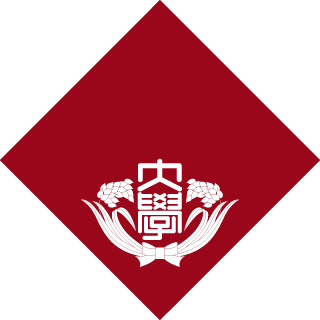- Study abroad
- Shinei ARAKAWA
Shinei ARAKAWA
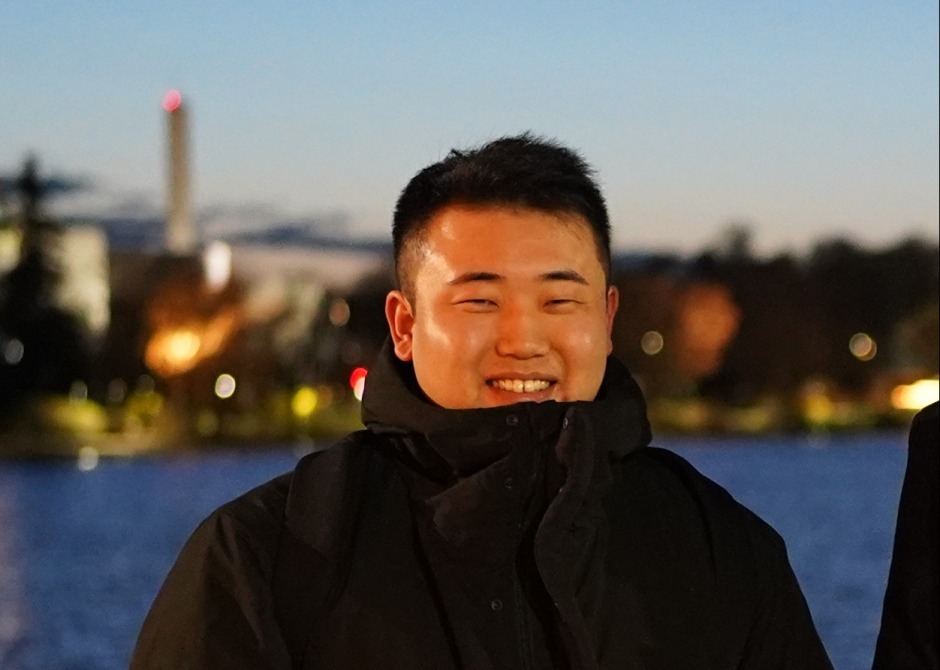
- Posted
- 2025年8月20日(水)
Shinei ARAKAWA | 1st year doctor’s student, School of Advanced Science and Engineering
- Visiting period: Feb. 2025 to July 2025
- Visiting university: Aalto University
- Visiting country and region: Espoo, Finland
I have been conducting research on image generation, a technology that enables computers to understand real-world images and to generate new ones. I had long been interested in the work of Professor Jaakko Lehtinen, who has been conducting pioneering research at the forefront of this field, and strongly wished to study under his guidance. Given the opportunity for overseas support
provided by SGU, I applied for this program in order to receive his direct supervision and further advance my research skills.
I conducted research on hierarchical image generation using diffusion models, one of the leading techniques in image synthesis. A diffusion model is a generative method that estimates a data distribution by gradually transforming real image data into a random state and then defining the reverse process to reconstruct meaningful structures. Originally developed from Langevin dynamics in physics to describe molecular motion, diffusion models have a clear physical and mathematical foundation.
In practice, however, diffusion models are not implemented solely on the basis of theory. Instead, they incorporate various refinements in network architectures and inference algorithms. As a result, the theoretical ideal and the practical optimal solution do not always coincide, and real-world implementations often rely on heuristic adjustments. This demonstrates that there remains room for bridging the gap between theory and practice.
Based on this challenge, I drew inspiration from the process by which humans create drawings. Typically, one begins by sketching the overall contours, then progressively adds shapes and colors to different parts, and finally fills in the details. By starting with coarse information and gradually adding finer details, each step clarifies what should be drawn next, resulting in a well-structured composition. I applied this principle to diffusion models, designing the generative process in a coarse-to-fine manner. This approach aimed to improve the separability and controllability of the information added at each stage, thereby enabling more intuitive and controllable image generation.
Throughout the course of this research, I carried out the entire process from reviewing prior work to implementing the proposed method, gaining significant insights into research design and evaluation methodologies. Furthermore, I developed a visualization tool that has proven useful for understanding generative processes and comparing models, and it has been utilized in the host laboratory abroad. Although I was not able to bring the research to full completion during the exchange period, I am continuing to refine the work after returning to Japan, with the goal of submitting the results to a top international conference.
Aalto University is located about ten minutes by metro from the Finnish capital, Helsinki, and is surrounded by dense forests. The university is named after the renowned architect and designer Alvar Aalto, and its campus conveys an artistic and distinctive atmosphere. The research group I belonged to was relatively small, consisting of about ten active students, allowing us to conduct research and discussions in a spacious and relaxed environment. The university also houses numerous computing clusters equipped with the latest GPUs, which enabled us to carry out a wide variety of experiments.
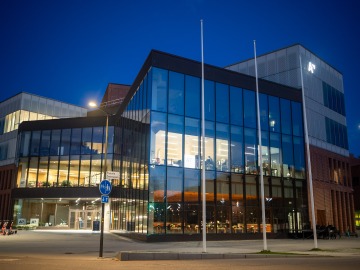 The campus of Aalto University
The campus of Aalto University
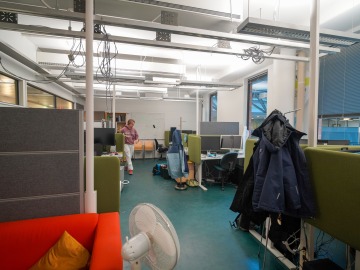 Our office
Our office
International Exchange
In the laboratory, both English and Finnish were spoken. Through research discussions, casual conversations, and various other interactions, I was able to develop my ability to explain ideas in English, and I gained greater confidence in speaking English compared to before my stay. I also studied Finnish little by little, which gave me an opportunity to learn about the country’s history and cultural values. In addition, I lived in a shared apartment with students from across Europe. By traveling together and participating in various activities, I was able to deepen my understanding of the different values and perspectives each of us held.
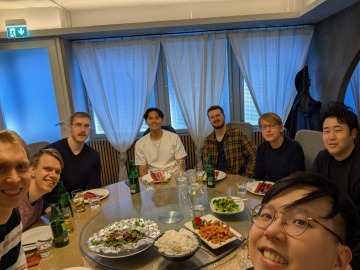 Dinner with laboratory members
Dinner with laboratory members
Residential Environment
I stayed in a shared apartment located in Espoonlahti (which means “Bay of Espoo” in Finnish), about 15 minutes by metro from Aalto University. The area was surrounded by forests, providing a very quiet and peaceful environment. Because Finland is situated at a high latitude, when I first arrived in February the sun rose around 8 a.m. and set around 5 p.m. In contrast, as the summer solstice approached, daylight remained even past 11 p.m. This allowed me to experience unique ways of spending time, such as going out for drinks with fellow students after research or enjoying the sauna—experiences that would be difficult to have in Japan.
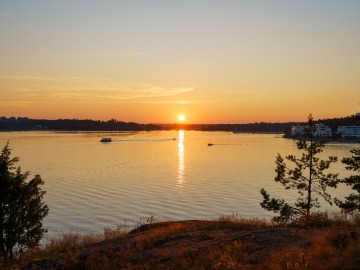 Peaceful time spent at a gulf near my apartment
Peaceful time spent at a gulf near my apartment
Surrounding Environment
Approximately 74% of Finland’s land area is covered by forests, and there are around 190,000 lakes scattered across the country. With such abundant nature, it is common for local people to spend time in the forest after work, either conversing with friends or enjoying solitude. I too often visited the forest when I felt tired from research, taking time to relax and clear my mind. From the laboratory, the center of Helsinki was easily accessible by metro or bus, making shopping and sightseeing convenient. Around my apartment, in addition to forests and a harbor, there was also a large shopping complex, so I had no difficulty purchasing daily necessities and groceries. Furthermore, Estonia, located across the Gulf, could be reached by ferry in about two hours, which allowed me to visit for sightseeing as well.
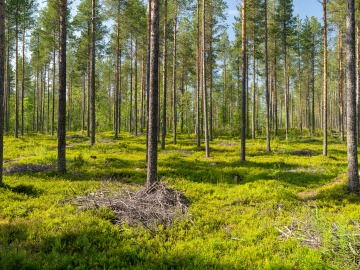 Summer in Lapland
Summer in Lapland
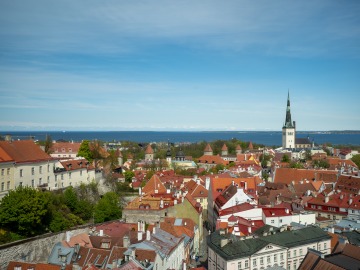 Tallinn, the Capital of Estonia, Retaining Traces of the Medieval Era
Tallinn, the Capital of Estonia, Retaining Traces of the Medieval Era
In Finland, coffee breaks are guaranteed by labor law, and multiple coffee machines are installed on campus. As a result, it was common for laboratory members to gather with a cup of coffee in hand and engage in discussions, which left a strong impression on me. The laboratory also had extra chairs, and professors as well as students would bring them over to my desk or to other students’ desks to hold consultations and discussions. I felt that the constant readiness to explain one’s research fostered an atmosphere that encouraged lively academic exchange.
On the other hand, winters in Finland are extremely harsh, and perhaps for that reason, people eagerly anticipate the arrival of spring. In particular, May 1st is celebrated as Vappu, a holiday marked by traditional sweets and drinks. Furthermore, on the day of the summer solstice, the Midsummer Festival is held, during which it is customary to spend time with family at a summer cottage. During this season, I enjoyed the sunset at a beach near Helsinki, where I could truly experience the changing of the seasons.
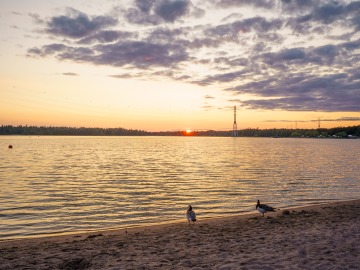 Summer solstice in Finland
Summer solstice in Finland
Future Goals After Overseas Experience
Through this overseas experience, I not only deepened my expertise in my research field but also gained significant insights into “research attitude,” including how to conduct research and how to engage in academic discussions—foundations that will be essential for my doctoral studies. Moving forward, I aim to build on these lessons during my doctoral program to advance my research and to develop technologies that bring joy to people and contribute to society. As a near-term goal, I plan to submit my work to top-tier international conferences and, in doing so, look forward to reuniting with Professor Jaakko Lehtinen and the students from his laboratory who supported me during my stay.
Conclusion
Through this overseas program, I was able to gain invaluable experiences and take on new challenges that I could never have achieved by continuing my research in Japan alone. I am confident that these experiences will be of great benefit to my future research activities in Japan. Finally, I would like to express my sincere gratitude to the SGU Office Support Team, who kindly provided me with advice many times before my departure, as well as to SGU for their generous support of my travel expenses and overall stay.
